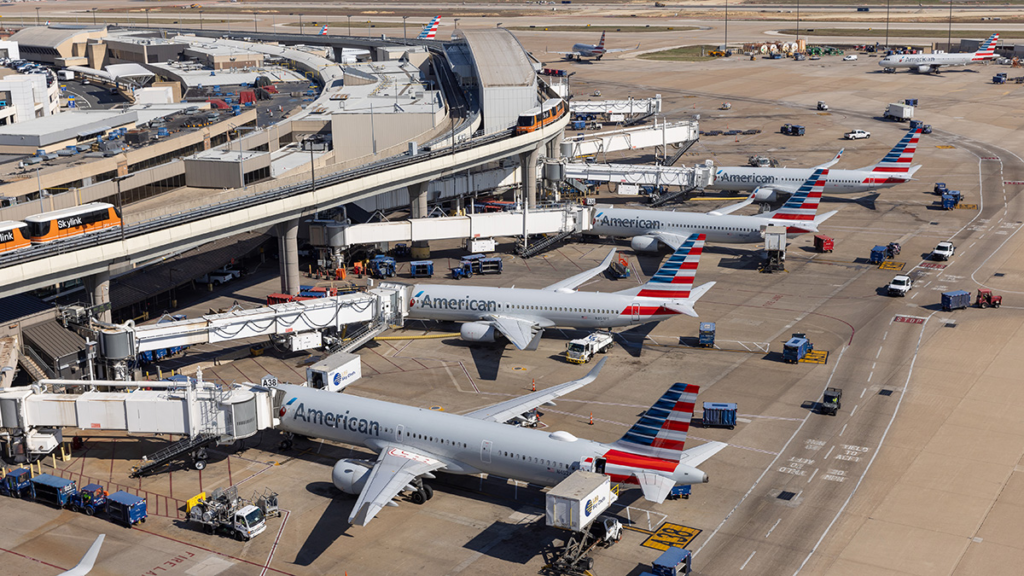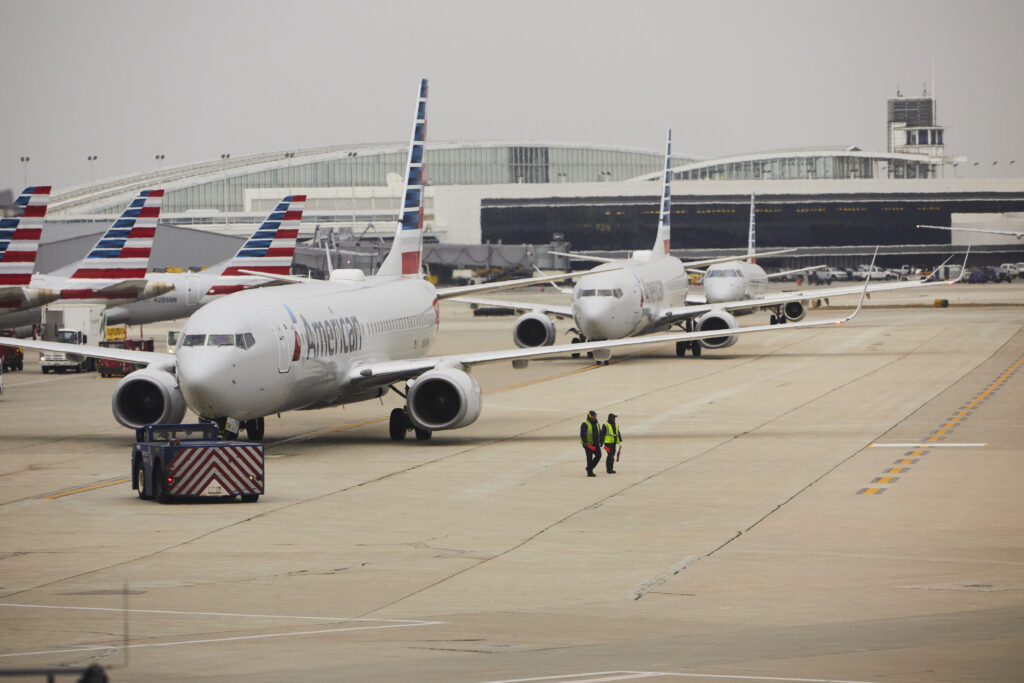DALLAS— American Airlines (AA) pilots declared a Mayday emergency after experiencing smoke in the cockpit shortly after departing Dallas-Fort Worth (DFW) on April 28, 2025.
The Airbus A320 successfully returned to DFW with all 96 passengers and crew unharmed despite experiencing significant communication difficulties with air traffic control.

American Pilots Declare Mayday
The incident occurred on flight AA2332 bound for Amarillo (AMA), departing approximately two hours behind schedule at 12:43 AM before returning just 18 minutes later.
Controllers and emergency personnel focused inspection efforts on the aircraft’s engines and avionics bay after landing, with the aircraft returning to service after a 19-hour inspection period.
The severity of the situation became apparent when pilots radioed: “Mayday, mayday, mayday, American 2332, declaring an emergency, we got smoke in the cockpit, we’ll be returning to Dallas.” This emergency declaration initiated immediate priority handling from Dallas air traffic control.
What made this incident particularly noteworthy was the communication difficulties experienced by the flight crew. Throughout the emergency, pilots struggled to receive and acknowledge controller instructions, repeatedly requesting information to be repeated, OMAAT flagged.
At one point, a pilot apologized directly, stating, “Sorry, we’re having a lot of trouble up here,” – indicating a potential radio malfunction potentially related to the smoke event.
The flight crew specifically requested emergency services to “focus on the forward part of the airplane” upon landing, explaining they had experienced “a fume and light smoke event” and were uncertain whether it was “electrical related to our radios and avionics, or if it was something else, engine-wise.” This information guided first responders to prioritize inspection of both engines, followed by the aircraft’s nose section.
ALSO READ: Delta Pilot Involved in Argument with ATC During Emergency

Struggle in Communication
The incident highlighted the exceptional training and professionalism displayed by both flight crews and air traffic controllers during a potentially dangerous situation.
Despite communication challenges, controllers maintained calm, supportive communication while providing clear instructions and necessary spacing for the emergency return.
The pilots demonstrated textbook emergency management by prioritizing aircraft control over communication, following the aviation priority principle: aviate, navigate, communicate.
Their decision to stop on the runway for immediate emergency inspection rather than taxiing to a gate reflected proper safety protocols for smoke events.

Aviation Safety Systems Intact
This incident represents how aviation safety systems are designed to manage unexpected emergencies. The aircraft, a 22-year-old Airbus A320 with registration N601AW, was only grounded for 19 hours before returning to service, suggesting that thorough inspections found no significant damage or persistent issues.
The quick resolution highlights the effectiveness of emergency protocols, particularly for smoke events, which are treated with extreme caution due to their potential to develop into serious situations. The controlled evacuation process and immediate availability of emergency services demonstrated the multilayered approach to aviation safety.
According to aviation experts, smoke or fume events require immediate action as they can potentially indicate electrical fires or other serious malfunctions. The crew’s prompt declaration of emergency and return decision aligned with best practices for this type of situation.
Stay tuned with us. Further, follow us on social media for the latest updates.
Join us on Telegram Group for the Latest Aviation Updates. Subsequently, follow us on Google News

